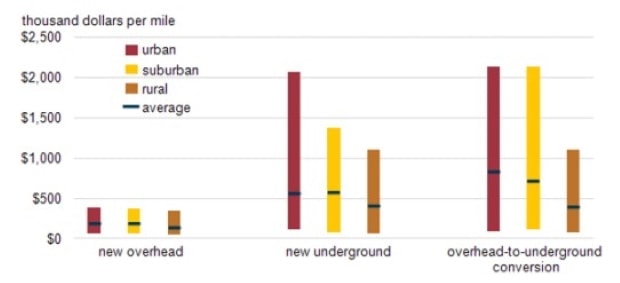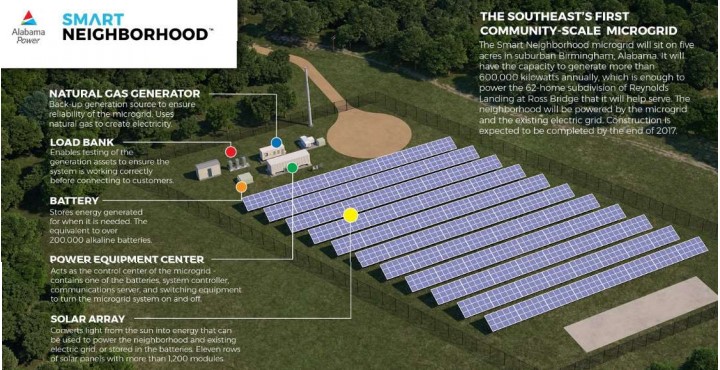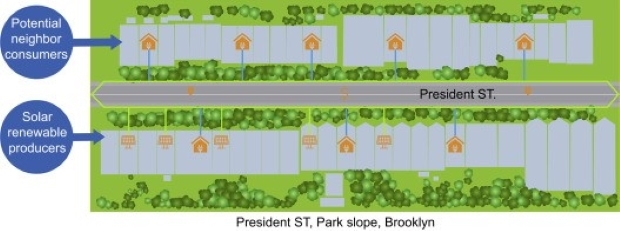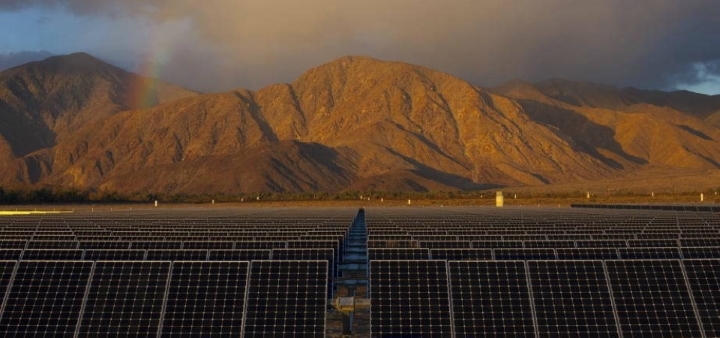The Rise of Solar Microgrids
Page Contents
Written by qualified solar engineer Aniket. Last updated:
Solar Microgrids are certain to rise in popularity in the coming years. Societies are expanding beyond cities, and the financials look better with community grids rather than traditional long-distance grids. Another important factor is that existing grid infrastructure continues to become outdated and inefficient. As well, microgrids present themselves as a great solution to power outages.
Besides the above advantages, microgrids based on reliable and renewable components such as solar photovoltaic technology can help to reduce the consumption of fossil fuels and the subsequent emissions of greenhouse gases. This will result in communities that are energy independent, secure and environmentally conscious
What is a Microgrid?
A microgrid can be defined as a system of Distributed Energy Resources (DERs), as well as groups of loads that can operate within a definite electrical boundary. The concept of microgrids isn’t new, and isn’t just exclusive to solar power.
For many years amid cities, there are buildings that use diesel generators as backup microgrids in the absence of grid power. However, the dependency on only one other type of fossil fuel and the potential to emit large amounts of CO2 renders diesel generators mostly undesirable.
Why Solar Microgrids are a Great Proposition
Unavailability of the conventional grid:
Imagine a remote village where an electricity grid doesn’t exist, and the nearest electricity distribution or generation point is significantly far away.
The traditional option was to build transmission lines the whole way to the village, which incurred huge manufacturing and transport costs to install the towers and cables. Not to mention the recurring costs of generating and consuming the electricity that comes from coal or other unclean sources.

Cost of installing transmission lines (Source – U.S. Department of Energy)
Building a power plant near to or in the village to eliminate the grid infrastructure cost for the initial investment to make sense was never practical, due to the required size of the power plant. Operating diesel-generated power on-site also raised the question of the availability of diesel.
Fighting Power Outages
What’s interesting is that solar microgrids are not only useful in remote locations devoid of grid infrastructure. Even in urban areas with existing grids, microgrids bring several benefits. A solar microgrid in conjunction with a conventional grid, for example, can provide a secure source of energy in the event of a power outage caused by a natural calamity or technical failure. Power outages can cause a large amount of financial loss. For example, 2017’s Hurricane Harvey cost the USA a staggering 125 billion dollars.
Flexibility and Cost Savings
Solar energy is likely the most flexible source of energy in terms of size, able to power anything from a wristwatch to an entire town.
If that’s not enough, solar PV now has a far cheaper cost over its lifespan and is proved to save thousands of dollars over the years when compared to fossil-based energy. Additionally, solar PV systems demand far less maintenance than their fossil-based counterparts, saving time and money over multiple decades.
Environmental Attribute
Besides the local advantages of cost savings and energy independence, opting for a solar microgrid also reduces vast amounts of GHG emissions that would otherwise degrade the atmosphere. For every MWh generated, a solar microgrid can prevent over 1500 pounds of CO2 from being emitted.
Degradation of the Existing Grid
As mentioned previously, the grid infrastructure that exists today in the US and in many parts of the world was built decades ago, when the use of electricity spread rapidly in and around the cities. Today, a large portion of the grid is outdated and requires frequent maintenance, including expensive equipment replacement. The American Society of Civil Engineers (ASCE) has given a concerning rating of D+ to the current electrical infrastructure in the US. It has been found that the value of the current grid stands at 1-2 trillion dollars, and replacing it entirely would cost a whopping $5 trillion. According to most experts, it is wise to invest this money into smarter, more sustainable technologies such as solar microgrids, rather than replacing the current grid system.
The Beginning of Change
Until the end 20th century, solar microgrids were theoretical concepts that were not implemented on a respectable scale in any community. In the last few years however, for aforementioned reasons, such microgrids are picking up the pace. Here are some noteworthy examples of recent times:
Alabama Smart Neighborhood

Alabama Microgrid (Source – U.S. Department of Energy)
Completed in 2018, Alabama Power’s Smart Neighborhood has 62 high-performance connected homes in a community microgrid. It employs a 330-kW solar PV system, together with a 360-kW natural gas generator and batteries to store the energy.
Brooklyn Microgrid
Brooklyn’s 1400-kW solar microgrid is interesting in the aspect that it uses a Blockchain-based transaction system. The excess energy generated by Brooklyn’s solar panels can be sold to users in NYC who would like to purchase clean, renewable energy.

Brooklyn solar microgrid (Source – Science Direct)
Borrego Springs Microgrid

Borrego Springs Solar Plant (Source – Inside Climate News)
Borrego’s population of a few thousand residents is powered by a smart grid. Similar to the above examples, it is connected to the main grid but primarily uses its own energy generated from solar PV, wind and fuel cells.
The Near Future
With every year that passes, the focus on microgrids increases. In a Global Innovation Report by Hitachi America, the fastest growing microgrid markets were examined. It was predicted that worldwide, there will be 7,500MW of capacity and a US$35,000 million market for microgrids by 2024.
The US Department of Energy has a ‘Microgrid Initiative’ which, according to their publication, states that the ‘Smart Grid R&D Program considers microgrids as a key building block for a Smart Grid and has established microgrid R&D as a key focus area.
To summarize, it is safe to say that traditional grids will gradually be replaced by smarter, cleaner and more sustainable microgrids. These new microgrids will not only solve several conventional grid problems such as losses, power outages and new infrastructure costs; but will greatly enhance community living.
References
- Microgrid-Ready Solar PV – Planning for Resiliency – NREL
- Brooklyn Microgrid – Brooklyn Energy
- Electricity Distribution System Baseline Report – U.S. Department of Energy
- Resilient Renewable Energy Microgrids – National Renewable Energy Laboratory
We hope you liked this article. Please rate it or leave us a comment.
Average rating 4.8 / 5. Vote count: 4
No votes so far! Be the first to rate this post.





